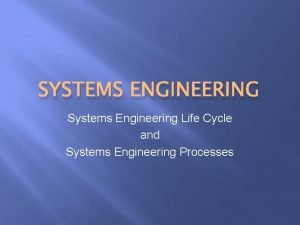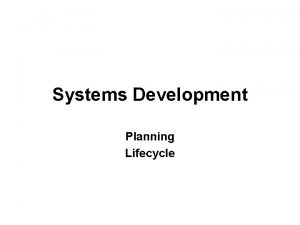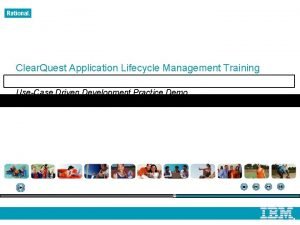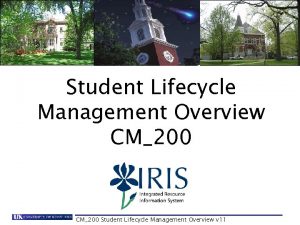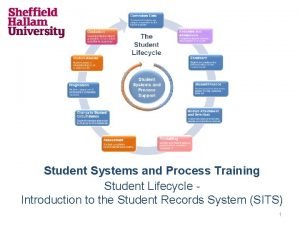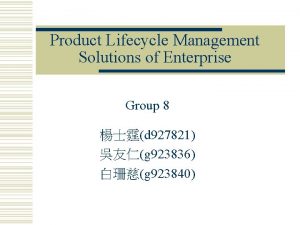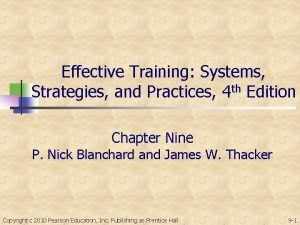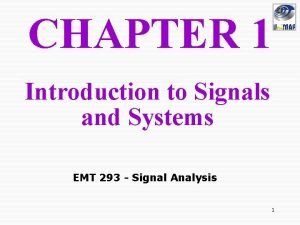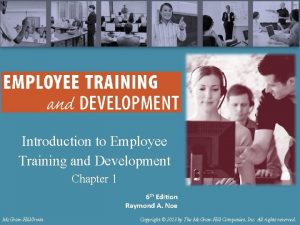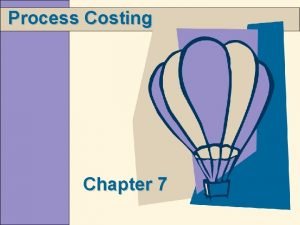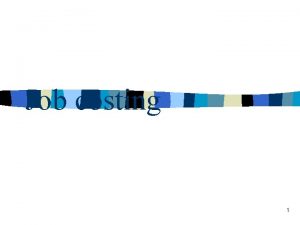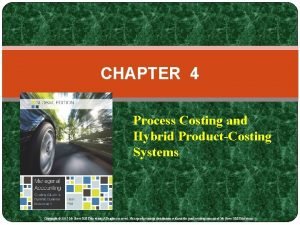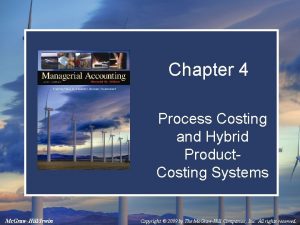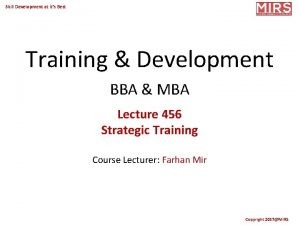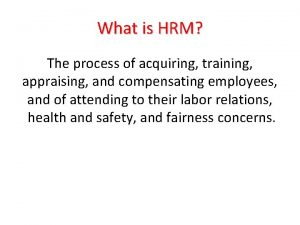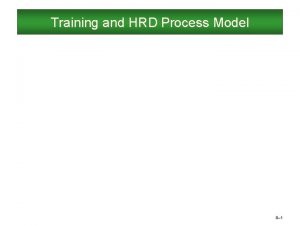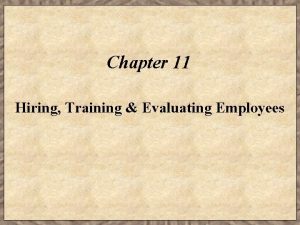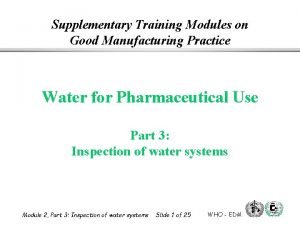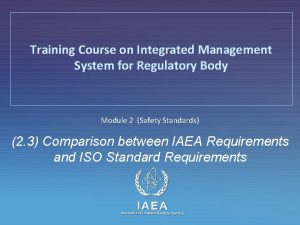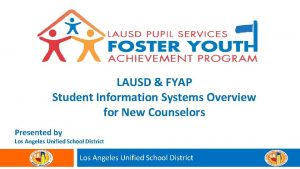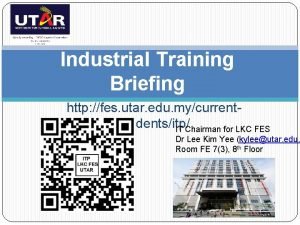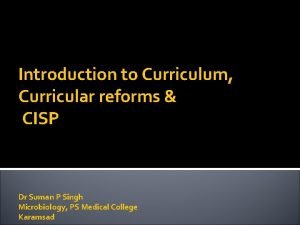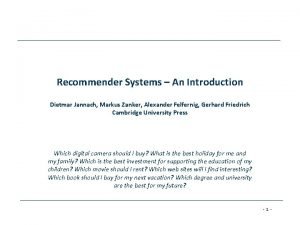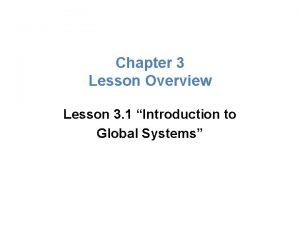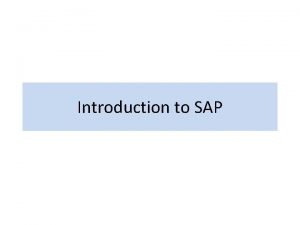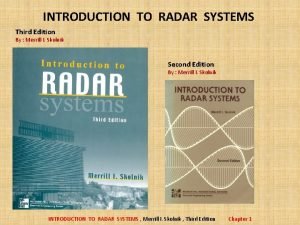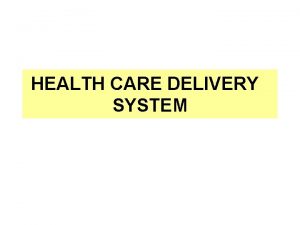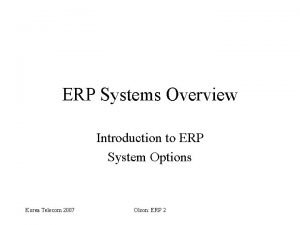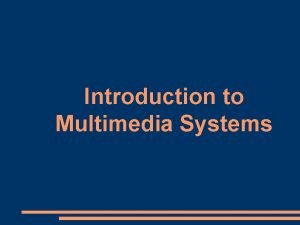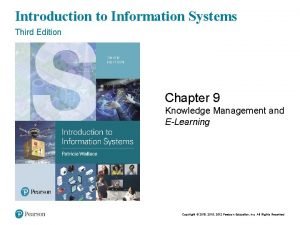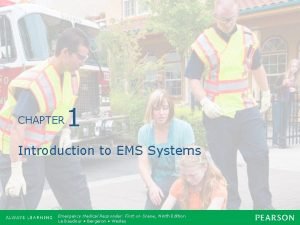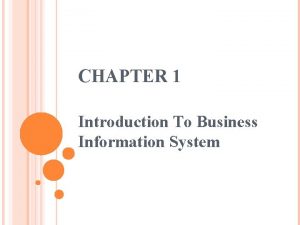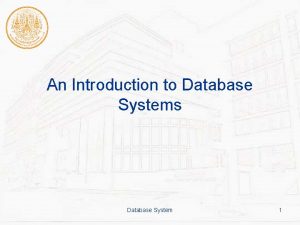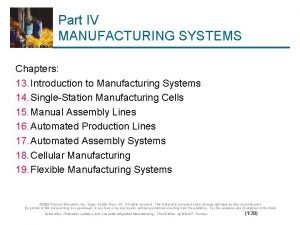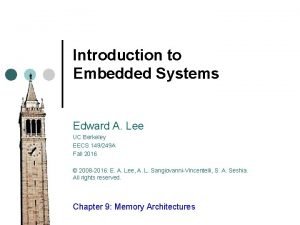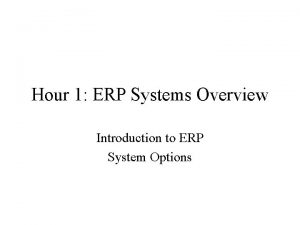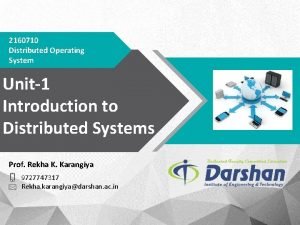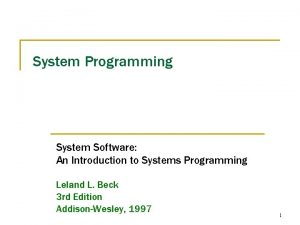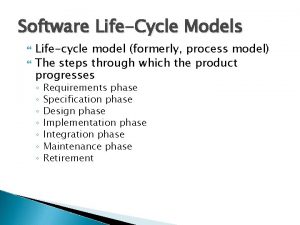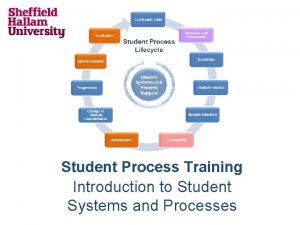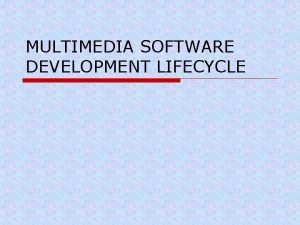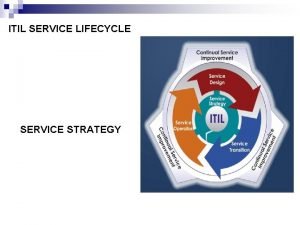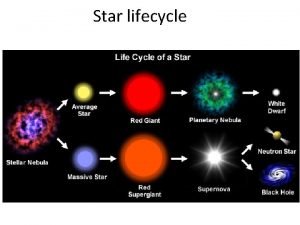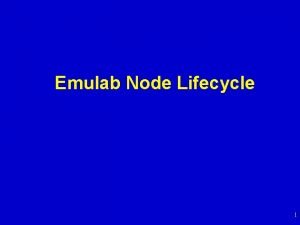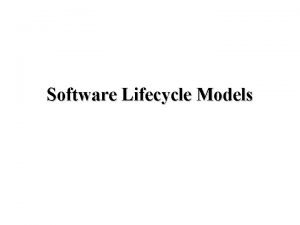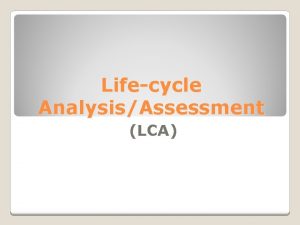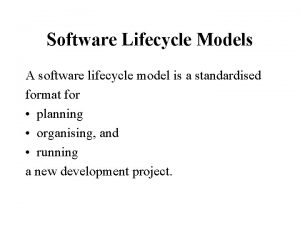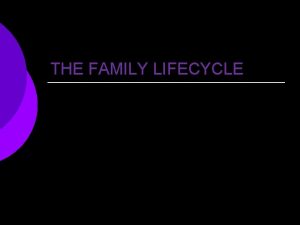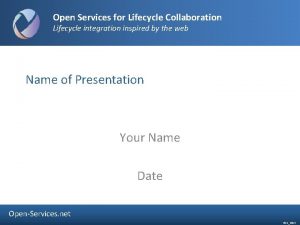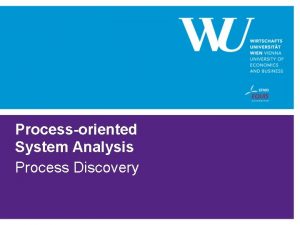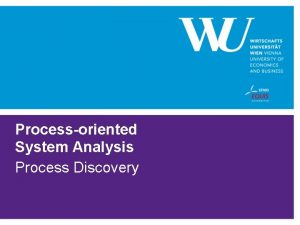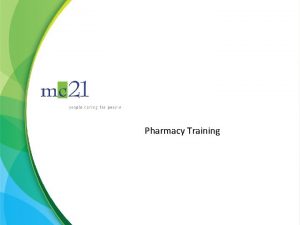Student Systems and Process Training Student Lifecycle Introduction


































































- Slides: 66

Student Systems and Process Training Student Lifecycle Introduction to the Student Records System (SITS) 1

Introduction 2

Introductions Who are we? Briony Hancox, Bex Hancock, Nikki Edwards Registry Services - Service Development Team SITS Help Service Desk Who are you? Your name? Where do you work? What do you do? How long have your been at SHU? Do you already use SITS? 3

Course Aims and Objectives This course will help you to understand: • the student lifecycle at SHU and where your role fits within it • the SITS: Vision corporate student records system, what to use it for and how to find your way around it • the key student records screens and the links between them • how courses and modules are setup • SITS Online/My Student Record and how you can use it • University reporting and what is available • HESA and why is it so important to the University • the process and systems support available to you. 4

SITS Help Service Desk 5

What Registry Services Does Registry Services works with other Professional Services staff to ensure the student lifecycle processes run smoothly. We are corporate process owners and are responsible for the majority of the student processes, our work includes: • • managing and developing processes specifying student systems changes training and user documentation reporting and Management Information both internally (eg board reports) and externally (eg HESA) providing student systems and process support (via SITS Help) translating policy into practice being aware of future changes and preparing for them ensuring that student processes and systems are fit for purpose. Professional Services include colleagues in Student Services, Business Services, University Timetabling Management Services etc. 6

The Student Lifecycle 7

Curriculum Data Courses and modules are setup in preparation for the start of a course Enquiries and Admissions Graduation Student invited to attend graduation, books online and attends ceremony Prospective student enquires about/applies for a course Enrolment Student Awards The Student Process Lifecycle Student award is calculated based on module results Progression Student progresses if successfully completes modules Student pays their fees and/or applies for help, bursaries, loans etc Module Attachment and Selection Student allocated core modules, selects elective/optional modules Student changes plans due to change in circumstances Registry Services - Assessment, Awards & Regulations (AAR) Student Finance (The Student Experience) Change in Student Circumstance Registry Services - Student Systems & Records (SSR) Student pre-enrols on-line before enrolling on their chosen course Corporate Affairs - AUKR Admissions Assessment Student completes assignments/takes exams Timetabling Facilities Directorate - Timetabling Student gets their timetable based on their modules (Syllabus +) 8 Facilities Directorate - Graduation Office

Curriculum Data Courses and modules are setup in preparation for the start of a course Student has SHU debt Graduation (Alumni) Enquiries and Admissions (Applicant) Re-validate course Student invited to attend graduation, books online and attends ceremony Student goes elsewhere Prospective student enquires about/applies for a course Transfer applicant (ATR) Student Awards Enrolment (Student) Prepare Lists Student award is calculated based on module results The Student Process and Systems Lifecycle Support Student pre-enrols on-line before enrolling on their chosen course Enrol student Student fails exams Progression Student progresses if successfully completes modules (the staff experience!) Student can’t pay Module Attachment and Selection Student allocated core modules, selects elective/optional modules Student changes plans due to change in circumstances Enter marks Assessment Student completes assignments/takes exams Academic Calendars Student pays their fees and/or applies for help, bursaries, loans etc Manage bursary queries Circumstance Student can't attend Student Finance Support Boards Student needs support. Change in Student doesn’t turn up Check data quality Timetabling Student changes modules Student gets their timetable based on their modules (Syllabus +) 9

The Student Systems 10

The Student Management System Sheffield Hallam University uses SITS: Vision as its corporate student records and curriculum management system. It is known locally as SITS which is short for Systems In. Tuition. The current version is 9. 3. 0 (it was upgraded on 31 March 2017). SITS is produced by the Tribal Group and manages student administrative processes from enquiries through to graduation and alumni. SITS: Vision: • uses an Oracle database with several hundred tables to hold information about students and academic processes • exchanges data with the University's other corporate systems • is maintained by the DTS Applications Team • is continuously being improved and developed to support new reporting requirements and administrative processes. 11

What SITS is used for at SHU • admissions processing for both undergraduate (UG) and postgraduate (PG) courses • recording of student pre/re/enrolment and personal details • control of staff access to SITS Online • control of student access to the Learning Centre, email, shuspace (student intranet), My Student Record (MSR) • recording fees and billing • reporting to external agencies such as HESA, HEFCE and SFE • recording and tracking students modules/programmes of study • recording and tracking research students progress • assessment processing and production of certificates • answering student queries • day to day course management. SITS: Vision User Manual – Students 12

SITS Staff Options - Client or Online? SITS Client SITS Online 13

SITS Student Option - MSR My Student Record (MSR) 14

SITS Environments As well as the SITS Production (Live) environment there are several other environments used by various SHU departments for development, user acceptance testing, training, etc. Most commonly used environments have different coloured headers so you can tell if you are in the wrong one! Production 9. 3. 0 (Live) Training 15

Enhancing Student and Curriculum Management (ESCM) 16

Programme Between February and May 2014, the University conducted a high-level review of our use of SITS which concluded that: • We could do more to make curriculum data easily available to all staff and students • We could make better use of existing and new functionality • We could simplify the way our academic model is structured within the system, which would make processing simpler and improve the visibility of curriculum data • Following the review, the Enhancing Student and Curriculum Data (ESCM) Programme was established to address these findings and exploit the potential that we have for more efficient processes and for better quality data. More information is available via: • ESCM Sharepoint Site (https: //staff. shu. ac. uk/universitystrategy/pip/ESCM. asp) • ESCM Blog (https: //blogs. shu. ac. uk/escm) • ESCM Newsletter (http: //eepurl. com/bmq. Vrv) 17

18

ESCM - Activities Some of the improvements that have already/are due to be implemented: • New Course Transfers Automation process • Updated Break in Study Task (MSR) • Head of Department / Subject Group Leader now held in Dept/Subject Group Records • New SITS Course Model Implementation • New Academic Model Report developed • New online process for Extenuating Circumstances called Request to Repeat an Assessment Attempt (RRAA) implemented • Renaming of My Student Record (for staff only) - being considered • New Curriculum View for academics • Collection of External Examiner data • Collection of Extra-curricular student data. 19

Access and Navigation 20

Accessing SITS - from a staff PC Accessing the SITS Client 1. 2. 3. Click the Windows Start button Navigate to All Programs/Corporate Applications Scroll down to the SITS shortcuts and select Systems In. Tuition 4. Login using your usual user name and password. Accessing SITS Online 1. 2. Navigate to the SHU Staff Intranet homepage Click on the SITS Online option 3. Login using your usual user name and password. 21

Accessing SITS - from a student PC Accessing the SITS Client 1. 2. 3. Navigate to the S: drive Select the DEPTS/SIAPP folder Double click the SITS shortcut (there are several other environments listed) 4. Login using your usual user name and password. Accessing SITS Online 1. 2. Navigate to the SHU Staff Intranet homepage Click on the SITS Online option 3. Login using your usual user name and password. 22

What’s in SITS? SITS is made up of a number of parts, the main ones used by SHU are highlighted below: • Publishing (IPP) used for the online course application form and course accreditation • Admissions (MAS) used for student recruitment and admissions • Programmes (CAMS) used for curriculum management, assessment tracking, calculation of module results and award classification • Students (SRS) used for storing personal and course related information about students including enrolment, fees, progression and assessment • e-Vision (SITS Online/My Student Record) web-enabled front end to the SITS client, used by applicants, students and staff. 23

SITS Menu System 24

Screen Layout and Navigation Menu Bar Toolbar icons Programme name User details and date Screen details Number of records retrieved Right click on a field to display field options including wildcards Double click on a field to view options (except Student no), double click again to select it Message line (not shown) 25

Toolbar Icons some options eg Store, Add Record will depend on your permissions 26

Logging out of SITS These are several options for closing a screen or logging out of SITS Closing a screen: 1. Click on the red cross on the screen border 2. Select Quit from the File menu Logging out of SITS 1. Click on the red cross on the screen border 2. Select Exit from the File menu 27

Main Student Data Screens 28

What do we need to know? Student Course Progress SPR SCJ • Record of an individual • a single record follows the individual through from applicant to student and onto Alumni • contains contact details, demographic data STU Full Student Details Student Course Join • Record of a student starting their course • fundamentally about HESA reporting -a single HESA instance • maybe multiple SCJs if the course is revalidated and current students join the new version or the student changes course Modules & Results • Record of a student’s enrolment in a given academic year • a new record is created for each academic year inc. periods of non-attendance eg timeout • updated from the enrolment task and system defaults SCE Student Programme Route • Record of a student’s academic progress • gives access to the Student Module Taking (SMO) screen used by systems such as Blackboard and Timetabling • also gives access to student results via the Student Module Result Status (SMR) screen Student Course Enrolment 29

Basic Student Data Screens SCJ • Record of an individual • a single record follows the individual through from applicant to student and onto Alumni • contains contact details, demographic data STU Full Student Details Student Course Join • Record of a student starting their course • fundamentally about HESA reporting -a single HESA instance • maybe multiple SCJs if the course is revalidated and current students join the new version or the student changes course SPR • Record of a student’s enrolment in a given academic year • a new record is created for each academic year inc. periods of non-attendance eg timeout • updated from the enrolment task and system defaults SCE Student Programme Route • Record of a student’s academic progress • gives access to the Student Module Taking (SMO) screen used by systems such as Blackboard and Timetabling • also gives access to student results via the Student Module Result Status (SMR) screen Student Course Enrolment Supported by departmental and faculty processes and procedures 30

The Student Number The Student number is usually 8 digits long and is a quick and easy way of retrieving information about a student. The second digit indicates the year in which the student is expected to start with us eg 26010101 On some screens the student number is followed by a / indicating there may be more than one record eg. Full Student Details (STU) - 26010101 Student Course Join (SCJ) - 26010101/2 Student Course Enrolment (SCE) - 26010101/3 Student Programme Route (SPR) - 26010101/1 The student's login code is the student ID with a 'b' instead of the 2 eg b 6010101. 31

Full Student Details (STU) Screen The STU screen shows details of an individual from applicant to student to graduate. There should only be one record per student Useful search fields include: • Student number • Family Name • Date of Birth (DOB) • Home Address • UCAS id If searching for an address click Apply before selecting Retrieve on the main screen Check the student’s financial status, none of the following should be enrolled: BD – Bad Debt DR – Debtor EX – Exclude until sorted 32

Other STU Related Screens From the STU screen you can access many other screens, all showing data associated with the student record you are looking at. The Personal Details screen has one or more records including details of the student's user name and initial password (which may have changed since) 33

Old Course Code Format Prior to 2016/17 a course code was 12 characters long and made up of six different elements: 77 BACHSD 01 F 2 Faculty Code (1 -2) 44 – SBS 55 – ACES 66 – HWB 77 – D&S Exceptions include: 31/32 - Ext Validated 34 - Uni of Sheffield School codes eg 14, 23 Faculty of Development and Society Award Code (2 -4) includes BA BS MA HD etc Acronym (5 -8) Created from the course title by the RS Changing SSR team to a 5 digit eg CHSD numeric Location (9 -10) includes 01 – SHU 22 – HK 27 – LUX Mode of Provision (11) F – Full Time P – Part Time D – Dist Learning T – Thick Sandwich S – Thin Sandwich Version (12) Version of the course (represents a validation event) code BA Childhood Studies Sheffield Hallam University Full Time Please note: The MAS/MCR course code (used at Applicant stage) is a different code 2 34

New Course Code Format From 2016/17 the course code is 10 characters long and made up of the following elements: 77 BA 00391 F Faculty Code (1 -2) Award Code (3 -4) Subject (5 -9) Short Mode (10) 44 – SBS 55 – ACES 66 – HWB 77 – D&S Externally validated course code e. g. 5 X includes BA/BS MA HD etc Numerical no coded meaning F – Full Time P – Part Time S – Sandwich D – Distance Learning L – Full time Distance Learning R – Research Faculty of Development and Society BA Childhood Studies Full Time Adapted from the ESCM Project Decisions Paper 35

Course Setup A standard course is setup using blocks for each year of the course and occurrences for the number of intakes in a particular year. Student (SRS) Record Data Course Blocks Occurrences 36

Credit Levels There a number of credit levels which generally relate to the block a student is studying eg a first year UG student is likely to be taking 120 credits at level 4. 8 Doctorate (PHD) level 7 Masters level 6 Degree level 5 Diploma of HE level 4 Certificate of HE level 3 A/AS level 37

Student Course Join (SCJ) Screen The SCJ screen shows details of a student joining a course. There can be more than one record if the student has completed another course, changed courses or the course has been revalidated. Student Id and Name SCJ Code 38

Course Details (CRS) Screen The CRS screen shows details of the course, including the start and end dates. This is especially important if the course has recently been revalidated. If you are searching for a course but do not know the exact title you can click on the Course Code field on a blank CRS screen and use the Select function to narrow down your search. 39

Student Course Enrolment (SCE) Screen The SCE screen shows details for a student enrolling on a course for a specific academic year plus data on fees and progression. There is usually one record for each year that the student has enrolled. Student ID 40

Curriculum and Assessment Setup Programmes, routes, diets and modules are all used to setup and manage curriculum and assessment data. Curriculum and Assessment (CAMS) Data Programme Routes Diets Modules Module Code: • Faculty • Level • Unique identifier • Module version • Delivery identifier They can be: • Core • Elective • Optional 41

New Module Code Format As part of the ESCM Programme the module codes for 2017/18 are due to change: The current module code is eleven characters long and takes the form 77 -4810 -00 S for example, where the characters represent particular meaning. Current format Faculty Hyphen Level Subject (numeric) Hyphen Version Delivery characters 1, 2 3 4 5 -7 8 9, 10 11 example 77 - 4 810 - 00 S It has been agreed that the new Module code will be 8 characters and takes the form 77 -404826 New format Faculty Hyphen Level Subject (numeric) characters 1, 2 3 4 5 -8 example 77 - 4 04826 Adapted from the Module Model Paper

Student Programme Route (SPR) Screen The SPR screen shows the student’s assessment records and gives access to other useful information such as the module results. There can be more than one record if the student has already completed a course 44

Student Module Taking and Results The Student Module Taking (SMO) and Student Module Results Status (SMR) screens show the student’s module records for all levels of their course. 45

Other Useful Screens - QSV The Quick Student View (QSV) screen is similar to STU but QSV has details of the course and a photograph displayed on screen. This screen is also useful for a summary of enrolment records 46

From Applicant to Student 47

From Applicant to Student Brief information collected about the enquirer (Achiever system). No STU record created at this stage Application submitted Applications received via UCAS, Clearing or Direct using ACD screen. STU record updated/created Results received - Status > UF Applicant transfer process (ATR) runs for all Unconditional Firm (UF) records. • STU record updated • SCJ/SCE/SPR records created • Student diet created • App Status A > AT • Enr Status > PNR • Pre-enrolment emails sent 48

Becoming a Student The Application Clearance and Decision Entry (ACD) screen shows details of the applicant and their status. 080000000 An applicant has to be Unconditional Firm (UF) before they can be applicant transferred (ATR) to the Student Records (SRS) part of SITS. Once they have transferred the Applicant status changes from A to AT. 49

Applicant Transfer (ATR) Screen If you want to see more details of the Applicant Transfer you can check the Applicant Transfer (ATR) screen. 50

SITS Online/ My Student Record (MSR) 51

SITS Online/My Student Record (MSR) 52

University Reporting Portal Student Reporting 53

University Reporting - The Source 54

University Reporting - Student Reports 55

HESA Considerations 56

Who/what is HESA? The Higher Education Statistics Agency is "the official agency for the collection, analysis and dissemination of quantitative information about HE" • it is owned by the HE sector • it acts on our behalf to enable us to meet the statutory data requirements of funding bodies and government department • it collects data about students, staff and finance. 57

Student data collection Each year the University has to submit a number of returns to the Higher Education Statistics Agency (HESA). The returns include data on Students, Staff, Destinations of Leavers, Finance etc. The Student Return is large and detailed and includes information about the: • courses and modules taken by each student • individuals themselves such as their entry qualifications • outcome of the assessment process for each module they have taken during the year. 58

What does this mean? The university’s funding will be affected if we do not submit an accurate and timely return so we all need to ensure that the information we provide is technically accurate, complete and submitted on time. Last October the University submitted over 41, 000 acceptable student records and in excess of 175, 000 student on module records. 59

Student Process and Systems Support 60

For further advice or information… Please contact SITS Help in one of the following ways: !SITS Help 2 ext 4475 standard web forms (SITS option) or visit the Student Systems, Support and Training sharepoint site (in development). 61

Student Process Updates… For current student process information please refer to the Student Process Update blog that is sent out monthly to all subscribed SITS users by SITS Help. For copies of all system and process related emails sent to staff or students by SITS Help please refer to the Communications to staff document library (there is also one for communications to students). 62

SITS Help Sharepoint Site Student Systems, Support and Training sharepoint site (in development) 63

Data Protection Act In summary: Personal data about students should not be given to people outside the University without legitimate reason and legal grounds for doing so. This includes giving information to students' parents or other family members. Personal data includes any information about the student. This means that we cannot even tell someone that an individual is a student here and cannot confirm information that someone gives to us. All students have a basic right to privacy, whatever their circumstances, and the Data Protection Act requires us to keep their personal data confidential. Please note: The new 'General Data Protection Regulations (GDPR)' are due to be introduced on 25 th May 2018. Secretariat - Information Governance webpages 64

Other Student Processes Training • Pre-Enrolment Services (Admissions) • Direct Applications • Student Processes Training • Module Selection - New staff, refresher and complex diets • Course Transfers • Assessment Training • Working with Students and Modules (CAMS 1) • Assessment - Pre, Post and Resit Board Processing (CAMS 2 to 4) • Assessment: Changes and Issues • Assessment: Inputting and amending marks • Assessment: Inputting marks and applying panel decisions • Assessment: Agreeing and undoing results • Applying Compensation in SITS • Progression and Awards in SITS • Supporting students through difficult circumstances 65

Course Aims and Objectives This course will help you to understand: • the student lifecycle at SHU and where your role fits within it • the corporate student records system, what to use it for and how to find your way around it • the key student records screens and the links between them • how courses and modules are setup • SITS Online/My Student Record and how to use it • University reporting and what is available • HESA and why is it so important to the University • the process and systems support available to you. 66

? 67
 Systems engineering lifecycle
Systems engineering lifecycle System development plan
System development plan Application lifecycle management training
Application lifecycle management training Student life cycle model
Student life cycle model Student lifecycle management system
Student lifecycle management system Student lifecycle model
Student lifecycle model Microsoft student lifecycle
Microsoft student lifecycle Student lifecycle project proposal
Student lifecycle project proposal Student lifecycle management solutions
Student lifecycle management solutions Decision support systems and intelligent systems
Decision support systems and intelligent systems Effective training systems strategies and practices
Effective training systems strategies and practices Introduction of system analysis and design
Introduction of system analysis and design Pxdes expert system
Pxdes expert system Introduction to signals and systems
Introduction to signals and systems Introduction to digital control system
Introduction to digital control system Introduction to digital control
Introduction to digital control Introduction to employee training and development
Introduction to employee training and development Process costing and hybrid product-costing systems
Process costing and hybrid product-costing systems Wip control account
Wip control account Cost production report
Cost production report Cost of production report
Cost of production report Job wr53 at nw fab
Job wr53 at nw fab Faculty model of training
Faculty model of training Process of acquiring training appraising and compensating
Process of acquiring training appraising and compensating Training and hrd process model
Training and hrd process model Hiring training and evaluating employees
Hiring training and evaluating employees Engineering elegant systems: theory of systems engineering
Engineering elegant systems: theory of systems engineering Embedded systems vs cyber physical systems
Embedded systems vs cyber physical systems Elegant systems
Elegant systems Embedded systems product design life cycle training
Embedded systems product design life cycle training Combat systems officer training
Combat systems officer training Validation of water systems for pharmaceutical use
Validation of water systems for pharmaceutical use Iaea gsr part 2
Iaea gsr part 2 Training is expensive without training it is more expensive
Training is expensive without training it is more expensive Perbedaan on the job training dan off the job training
Perbedaan on the job training dan off the job training Aggression replacement training facilitator training
Aggression replacement training facilitator training Fyap
Fyap Lkc fes industrial training
Lkc fes industrial training Things to say at cico.doc
Things to say at cico.doc Student doctor method of clinical training
Student doctor method of clinical training Osu student organization training
Osu student organization training Introduction to recommender systems
Introduction to recommender systems Recommender systems: an introduction
Recommender systems: an introduction Open source operating system
Open source operating system Chapter 3 lesson 1 introduction to global systems
Chapter 3 lesson 1 introduction to global systems Sap systems introduction
Sap systems introduction Skolnik introduction to radar systems
Skolnik introduction to radar systems Introduction to healthcare delivery systems
Introduction to healthcare delivery systems Introduction to information systems 6th edition
Introduction to information systems 6th edition Erp 2 systems
Erp 2 systems Content management system capabilities
Content management system capabilities White-collar workers คือ
White-collar workers คือ Characteristics of multimedia
Characteristics of multimedia Introduction to information systems 3rd edition
Introduction to information systems 3rd edition Introduction to management information systems 5th edition
Introduction to management information systems 5th edition Introduction to ems systems chapter 1
Introduction to ems systems chapter 1 Introduction to information system in business
Introduction to information system in business Introduction to accounting information systems
Introduction to accounting information systems An introduction to database systems
An introduction to database systems Introduction to global systems
Introduction to global systems Types of air conditioning system ppt
Types of air conditioning system ppt Introduction to manufacturing systems
Introduction to manufacturing systems Introduction to embedded systems lee seshia solution manual
Introduction to embedded systems lee seshia solution manual Introduction to electrical power systems
Introduction to electrical power systems Introduction to erp systems
Introduction to erp systems Distributed os definition
Distributed os definition System software: an introduction to systems programming
System software: an introduction to systems programming
